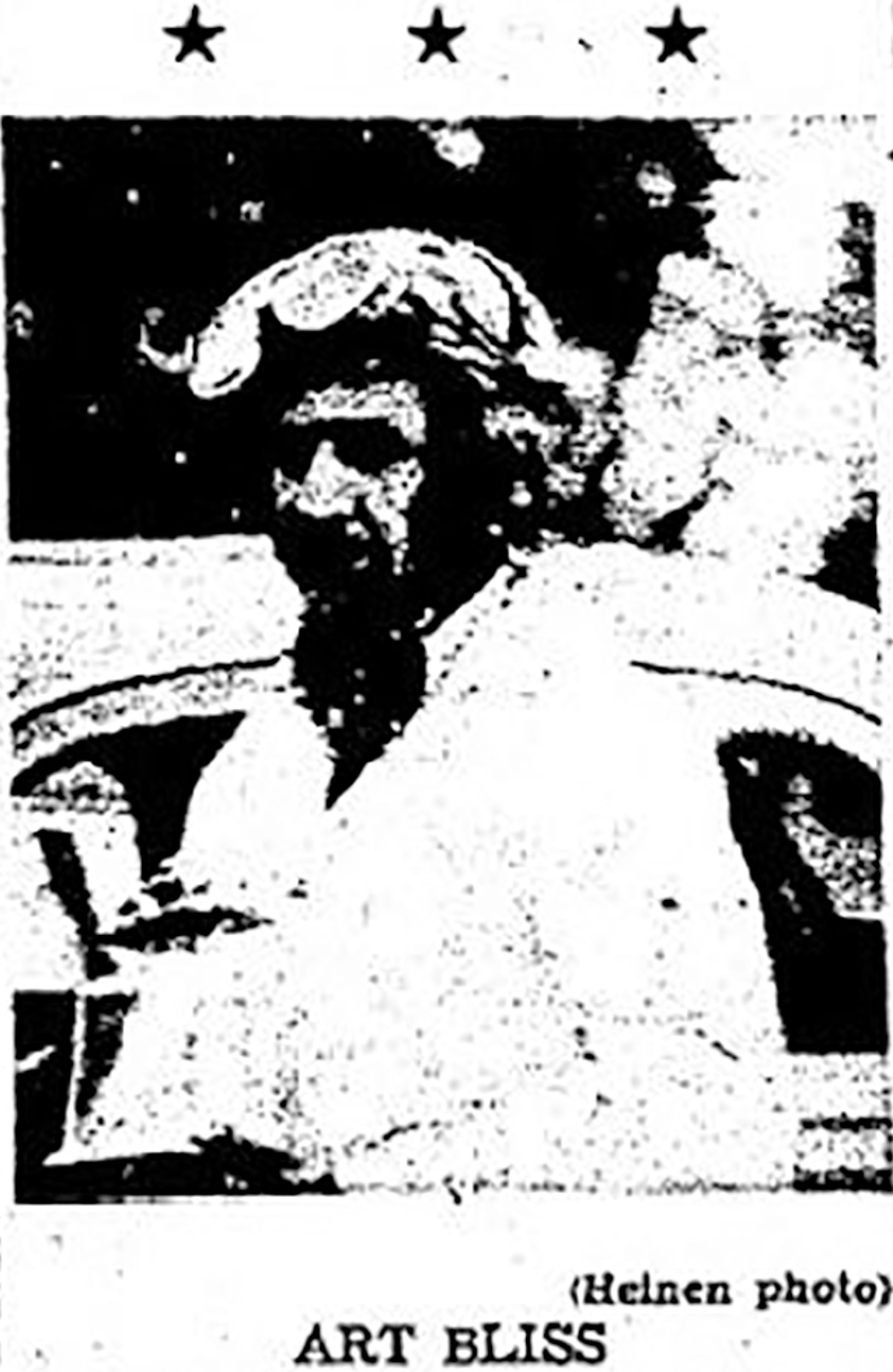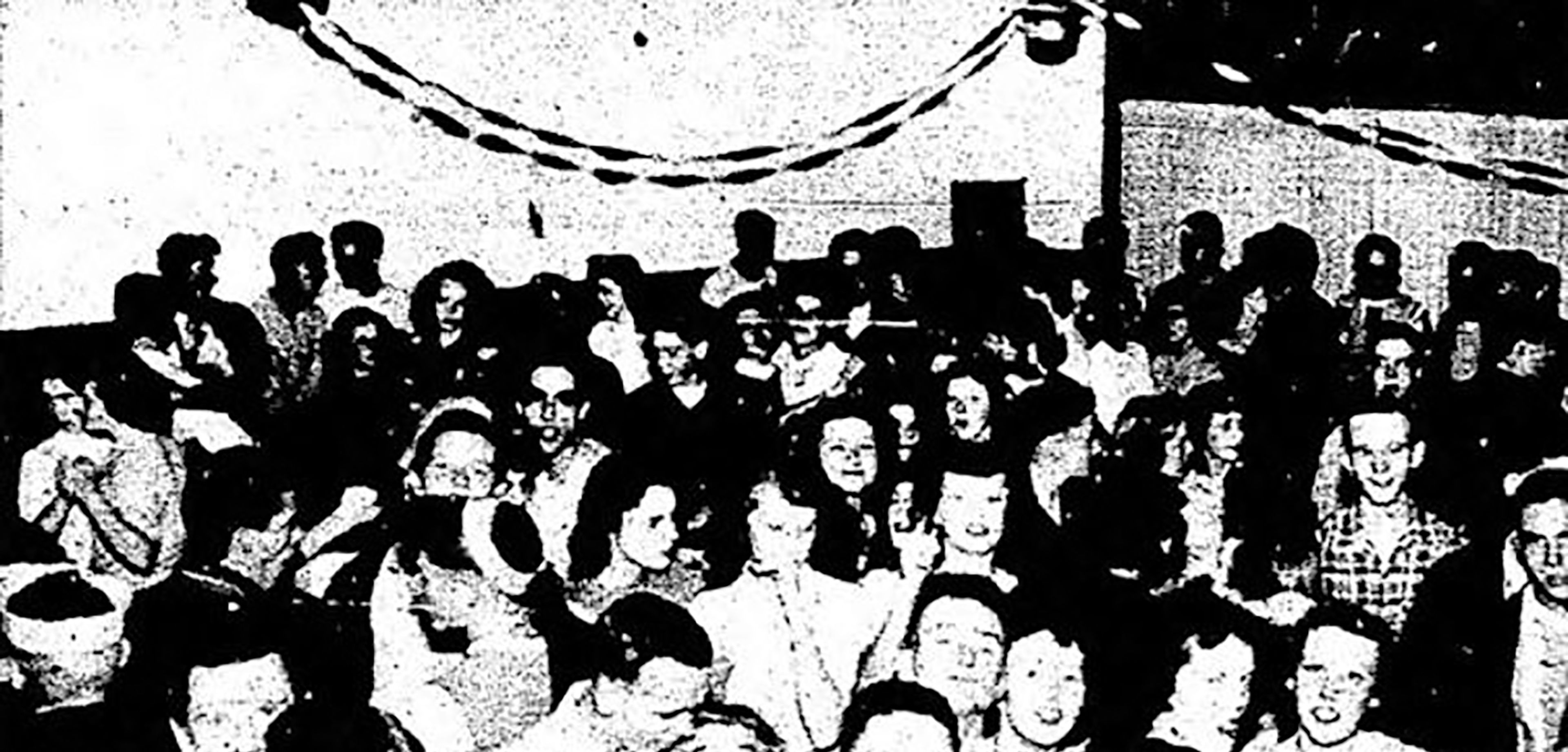Asotin, Nov. 18. — A remarkable rotation, strictly adhered to, of grasses, hay, and potatoes, keep the land in northern Ireland from eroding—even after many generations of farming, Joan Elsensohn, Pomeroy, said Wednesday at Asotin. Miss Elsensohn was a member of the delegation of Eastern Star members to initiate candidates at the Asotin chapter room.
“Agriculture there is so extremely different from ours — when we would be so very careful to plant on the exact contour, preventing all erosion possible, they plant up and down the hill — purposely,” she said, “Yet, we saw no signs of erosion on their gently sloping hills.” The five-year rotation, extensive use of grasses, and the fact that the rain comes all the time, instead of in storms, accounted for the lack of erosion,” she said. “Since the air is always moist, and there is usually a fine mist of rain, the moisture that falls is absorbed in the soil, instead of running off,” she added.
Miss Elsensohn, 21, daughter of wheat and cattle farmers, Mr. and Mrs. John Elsensohn, Pomeroy, and a graduate last June of Washington State college, was a member of a youthful unofficial diplomatic corps to rural Europe, and spent six months on Irish farms, observing their methods, living with farm families, participating in community life, and explaining American farm customs. She returned to Pomeroy Nov. 3, having left on June 13. She carefully explained that they were not teachers in Ireland, merely observers.
In the students’ exchange program, she lived with, and worked with 11 Irish farm families, all of whom had children approximately her age. “Supposedly, we were to be treated as members of the family, but frequently, we were treated as guests, and very rarely, as oddities.” In one community, several persons asked each other, as they were coming to see us, “Have you seen the three Americans?” As members of the family, they were to work in the fields if the family worked in the field.
Miss Elsensohn said Irish women do not work in the field, but she assisted with the household chores of cleaning and cooking, and for the experience, insisted upon doing some of the farm work—learned to drive a tractor, and spent an afternoon shocking hay.
Although she had very little free time, “if we weren’t doing something with the family we lived with, we were going to visit some other farm to see how they did things”— she brought back treasures for her family, and one very special gift for herself — a three and a half yard Irish linen table cloth, with the napkins, for her hope chest.
Other goods included china, linen, Swiss chocolates, Scotch tartan plaids, and English woolens.
“In everything we saw, we attempted to discover the reason for using the technique that to us seemed peculiar,” she said. Usually custom, or weather accounted for the method. For instance, the Irish farmer handles his hay crops extensively—shocking into little shocks, then larger ones, then larger, larger, and finally onto the hay stack. It takes him from three to four weeks to get his hay from the field. This is doubtless because it is raining all the time, and they need to dry the hay so carefully. Annual rainfall of 40 inches in the lower countries, and 60 inches on the highlands fall all the time in a fine light rain. The small fields farmed by the Irish were also attributed to the weather. “With so much handling as their crops require, they couldn’t use larger fields—’they haven’t time to work them when they need to be worked.”
Tradition requires that the eldest son shall inherit the farm from his father. This frequently works a hardship upon the son, she said, because he can’t marry until he is 35 or older. The farm simply won’t support his family and his parents too. “I stayed on one farm on which there was a seventh generation eldest son, farming the same land his great-great-great-great-grandfather had farmed. His eldest son was about my age, and planned on farming that farm, too, of course.”
Major crops in northern Ireland are kale, turnips, mangols, and potatoes, as root crops, which are fed to stock or chickens, and grasses, which are also fed to the stock. “They were utterly thrilled with the popcorn I took from home. They didn’t know corn as we know it and, never had eaten corn on the cob. They don’t raise corn—in fact, they raise very few foodstuffs, except their dairy products, meat and poultry. The family I was with was so delighted with the popcorn I popped for them, that I had mother send me about five pounds more before I came back.”
Farm Economy Stable
Miss Elsensohn felt that the farms in Ireland had a more stable economy than that of the northwest, mainly because of the diversification. “If the weather is too dry or too wet, the grain crop here is considered lost, and the farmer is poor that winter. There, if the grass crop isn’t good, the potatoes will be good.” With this explanation, her father countered with, “If the grain isn’t good, we have the stock there in Garfield county.”
Strict hours are observed on the farm, similar to our factories or stores, she said. Although the farm hands are not under union organization, when noon on Saturday comes, they drop their tools and quit, she said. “No matter what needs done on the farm, and it is frequently something very urgent, they take off Saturday afternoon and Sunday, and work only their required 44 hours.”
Having been raised on a wheat farm, where, if the wheat needs to be harvested, the family, and all the crew work 12 to 16 hours a day, seven days a week, this seemed unthinkable to her.
Three young delegates were in the same general region in northern Ireland on the good will tours, Miss Elsensohn, Wayne Bath, Auburn, Neb., and Barbara Juniver, North Brandford, Conn. A total of 48 farm youths from the United States sailed in June as ambassadors under the international farm youth exchange program.
The exchange program is composed of cooperative extension service of the U. S. department of agriculture, and the state land-grant colleges with the approval of the department of state. Purpose of the program is to promote international understanding and good will, help develop junior leadership among farm youth, and help rural people of the various countries understand each other’s problems, attitudes, and talents.
“They had many misconceptions of Americans, of course,” she said. “We helped that some, I hope. We certainly benefited from the program. Sometimes I couldn’t realize that I was not just around the corner from home —they had such a way of making us feel welcome.”
This story was published in the Nov. 19, 1951, edition of the Lewiston Tribune.



